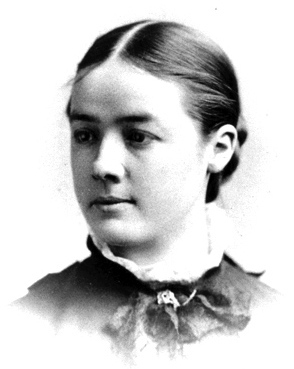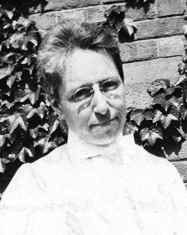 loading
loading
The pioneers Vassar College ArchivesMary Augusta Scott View full imageMary Augusta Scott Even before Yale made its official announcement about coeducation, Mary Augusta Scott had written to President Timothy Dwight ’49 to ask about admission. Dwight passed on the inquiry to administrator Trumbull Ladd, who assured Scott, “I see no reason why you should not attain the doctor’s degree. . . . You appear already to have done a considerable amount of advanced work.” Born in Dayton, Ohio, in 1851, Scott graduated from Vassar with a BA and MA in 1876. In the 15 years before she entered Yale, she studied at Cambridge University and Johns Hopkins and taught at Vassar. She was particularly proud of being the first woman to earn a fellowship at Yale. The publisher George Arthur Plimpton wrote to congratulate her when he saw the news in the paper, adding: “The world has grown tremendously. . . . This higher education for women has come to stay and women are going to be given just as good facilities as men have. It is singular that men don’t realize it.” Scott became an English professor at Smith in 1902. She was a prolific writer, contributing to journals and publishing five books, including Elizabethan Translations from the Italian and The Essays of Francis Bacon. On her death, a student remembered her as private, living “to a certain extent in seclusion,” and as a rigorous teacher and scholar. At the same time, “No one told a joke more irresistibly or enjoyed one more. . . . One can best describe her in the terms which she applied to Chaucer, ‘so wise, so learned, and so sunny.’” Scott left a bequest to Vassar, and a chair of English there is named for her.
Margaretta Palmer Although she earned her degree in mathematics, Margaretta Palmer’s work and her dissertation were on astronomy; she was likely the first woman ever to earn a doctorate in the field. Born in 1862 in Branford, Connecticut, Palmer went to Vassar and studied under Maria Mitchell, a pioneering astronomer—and followed closely in her footsteps, researching the comet Mitchell had discovered. Many of Palmer’s male relatives had attended Yale; after graduating from college, she was hired as a research assistant in the Yale Observatory. She worked at this post until entering graduate school and returned to it after receiving her PhD. Her specialty was computational astronomy; she collected data on dozens or hundreds of sightings of a single astronomical object from different observatories, and set up complex equations that allowed her to determine the object’s orbit. In 1918 the observatory closed, but Yale retained Palmer because her work was deemed so valuable. In her dissertation, Palmer had computed the orbit of Maria Mitchell’s comet, which had also been sighted by a German woman, ten days after Mitchell found it. “To the woman,” Palmer wrote, “who turns her attention to astronomy this comet is conspicuous as one of the few that have been discovered by a woman, and probably the only one that has ever been discovered independently by two women.”
 Vassar College ArchivesCornelia H. B. Rogers View full imageCornelia H. B. Rogers The first seven women to earn Yale PhDs included two sisters from the Rogers family of Bridgeport, Connecticut. Cornelia Hephzibah Bulkley Rogers graduated from Wellesley in 1884, then studied in Italy and Spain. She earned the first PhD awarded in her field at Yale and was an expert in Old Spanish as well as Italian and French; her professor noted that she was “exceptionally well prepared” for doctoral work, with “a remarkable fluency and accuracy” in Spanish. She became an instructor in French and Italian at Vassar in 1898 and in 1902 an associate professor.
|
|